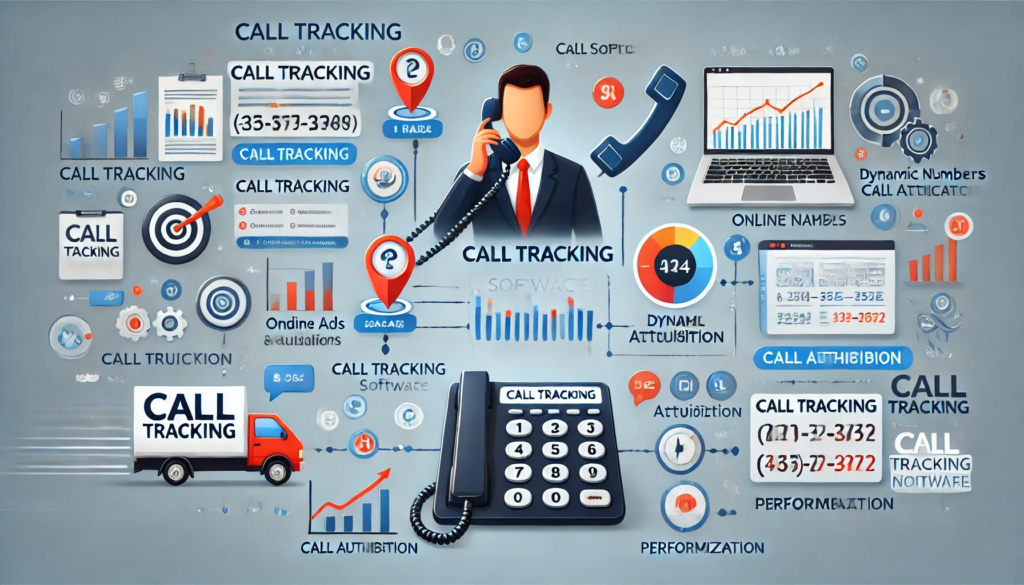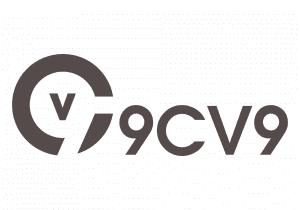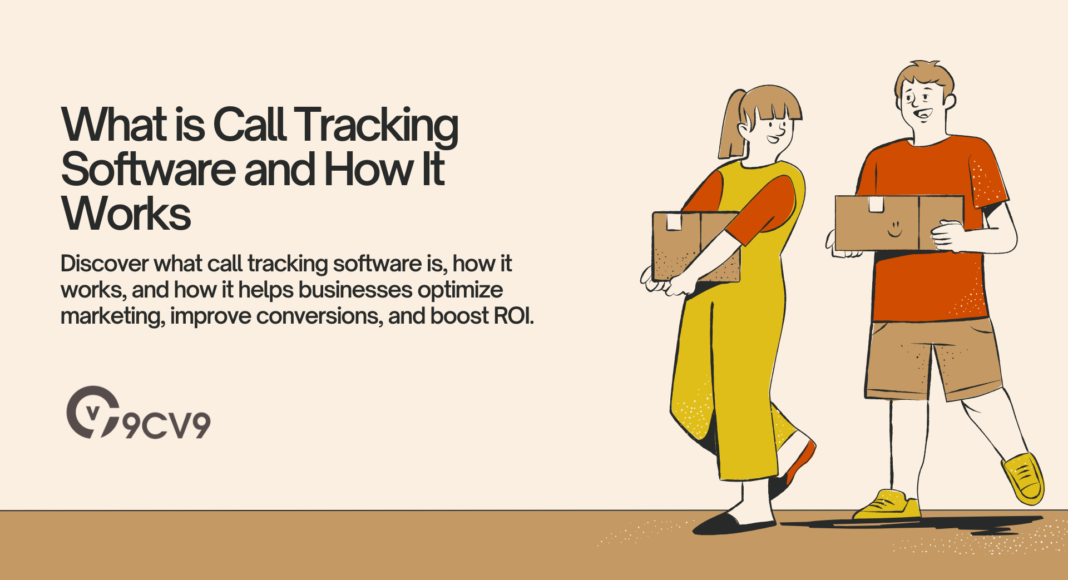Key Takeaways
- Call tracking software enables businesses to track the source of inbound calls, providing valuable insights for marketing optimization.
- It helps improve customer service by analyzing call data, identifying trends, and refining support strategies.
- By integrating with CRM systems, it boosts lead conversion rates and enhances ROI through data-driven decision-making.
In today’s digital-first business landscape, companies rely on multiple marketing channels—search engines, social media, email campaigns, and paid ads—to attract potential customers.
However, while digital analytics tools like Google Analytics and CRM platforms provide insights into online user behavior, businesses often struggle to track and analyze one of the most critical customer interactions: phone calls. This is where call tracking software becomes essential.

Call tracking software is a powerful tool that enables businesses to monitor, analyze, and optimize inbound phone calls, helping them determine which marketing efforts drive the most valuable leads.
By assigning unique phone numbers to different campaigns, businesses can accurately attribute calls to specific channels, evaluate customer interactions, and refine their sales and marketing strategies.
Whether a company is running paid search ads, social media campaigns, or email marketing, call tracking bridges the gap between digital touchpoints and offline conversions, ensuring businesses make data-driven decisions.
The growing demand for personalized customer engagement and data-driven marketing has fueled the adoption of advanced call tracking technologies.
Modern call tracking solutions go beyond simple call attribution, incorporating features like AI-driven analytics, call recording, conversation intelligence, and CRM integrations.
These capabilities provide businesses with deeper insights into customer behavior, enabling them to optimize their advertising spend, sales performance, and customer service operations.
Why is Call Tracking Software Important?
- Accurate Marketing Attribution – Businesses can pinpoint which campaigns, keywords, or ads generate the highest number of inbound calls, ensuring better allocation of marketing budgets.
- Enhanced Customer Insights – Call recording and AI-powered speech analytics allow companies to assess customer sentiment, identify trends, and improve service quality.
- Improved Sales Conversions – By analyzing call interactions, businesses can refine their sales strategies, improve lead qualification, and enhance conversion rates.
- Optimized Customer Experience – Call tracking enables companies to route calls efficiently, reducing wait times and ensuring customers are connected to the right department or agent.
- Data-Driven Decision-Making – Integrating call tracking with CRM and analytics platforms provides a comprehensive view of customer journeys, helping businesses refine their marketing and operational strategies.
Industries Benefiting from Call Tracking Software
Call tracking is widely used across various industries, including e-commerce, healthcare, real estate, automotive, financial services, and digital marketing agencies. For example:
- E-commerce businesses use call tracking to understand which advertising channels drive customer inquiries about products or promotions.
- Healthcare providers track appointment bookings and improve patient communication.
- Real estate agencies leverage call tracking to monitor property inquiries and optimize lead generation campaigns.
- Marketing agencies use call analytics to measure campaign effectiveness and deliver better ROI to their clients.
As businesses continue to embrace omnichannel marketing strategies, call tracking software plays a vital role in ensuring that every customer touchpoint—both online and offline—is measurable and optimized for maximum impact. In this blog, we will explore the fundamentals of call tracking software, how it works, its key features, benefits, and challenges, helping businesses understand how to leverage this technology for growth and success.
Before we venture further into this article, we would like to share who we are and what we do.
About 9cv9
9cv9 is a business tech startup based in Singapore and Asia, with a strong presence all over the world.
With over nine years of startup and business experience, and being highly involved in connecting with thousands of companies and startups, the 9cv9 team has listed some important learning points in this overview of What is Call Tracking Software and How It Works.
If your company needs recruitment and headhunting services to hire top-quality employees, you can use 9cv9 headhunting and recruitment services to hire top talents and candidates. Find out more here, or send over an email to [email protected].
Or just post 1 free job posting here at 9cv9 Hiring Portal in under 10 minutes.
What is Call Tracking Software and How It Works
- What is Call Tracking Software?
- How Call Tracking Software Works
- Types of Call Tracking Methods
- Key Benefits of Using Call Tracking Software
- Industries That Benefit from Call Tracking Software
- Challenges and Limitations of Call Tracking Software
- Choosing the Right Call Tracking Software
1. What is Call Tracking Software?
Call tracking software is a technology-driven solution that enables businesses to track, record, and analyze inbound phone calls. It helps organizations determine which marketing efforts are driving calls, ensuring accurate campaign attribution and improved customer interactions. By assigning unique phone numbers to different advertising channels, businesses can measure the performance of digital ads, offline promotions, social media campaigns, and website visits.
This technology is widely used in industries such as digital marketing, healthcare, real estate, automotive sales, and financial services, where phone calls play a crucial role in customer engagement and lead generation. Call tracking not only provides insights into customer interactions but also helps businesses enhance sales strategies, improve service quality, and optimize marketing budgets.
Key Functions of Call Tracking Software
1. Call Attribution and Source Tracking
- Assigns unique phone numbers to different marketing channels (Google Ads, Facebook Ads, website, emails, billboards, etc.).
- Helps businesses track which sources generate the most calls, allowing better budget allocation.
- Example: A real estate agency uses different phone numbers for Google Ads and Facebook Ads to determine which platform drives more inquiries about property listings.
2. Call Recording and Conversation Analytics
- Records customer conversations for quality assessment, training, and compliance purposes.
- AI-driven software can analyze conversations to detect customer sentiment, intent, and frequently asked questions.
- Example: A healthcare clinic records calls to track patient inquiries, appointment scheduling, and customer feedback, ensuring compliance with HIPAA regulations.
3. Dynamic Number Insertion (DNI)
- Dynamically changes phone numbers displayed on a website based on the visitor’s source (Google search, paid ads, social media, etc.).
- Ensures accurate call tracking without disrupting the user experience.
- Example: A law firm uses DNI to display different phone numbers for organic search visitors and PPC ad visitors, allowing them to measure which strategy is more effective.
4. Call Routing and Forwarding
- Directs calls to the appropriate department or sales agent based on caller location, time of day, or intent.
- Reduces wait times and improves the customer experience by ensuring calls reach the right representatives.
- Example: An e-commerce business routes calls related to order inquiries, returns, and technical support to specialized teams for faster resolution.
5. CRM and Marketing Software Integration
- Seamlessly connects with CRM platforms (Salesforce, HubSpot, Zoho) and marketing tools to automate lead tracking and customer interactions.
- Helps businesses link call data with customer profiles, improving personalization.
- Example: A car dealership integrates call tracking with its CRM to automatically log customer inquiries about specific car models, helping sales teams follow up effectively.
Types of Call Tracking Software
1. Static Call Tracking
- Assigns a fixed phone number to a marketing campaign or source.
- Best for offline marketing efforts like TV commercials, print ads, or business cards.
- Example: A restaurant uses one phone number for newspaper ads and another for TV commercials to track which generates more reservations.
2. Dynamic Number Insertion (DNI)
- Automatically swaps phone numbers on a website based on the visitor’s referral source.
- Ideal for digital marketing campaigns (Google Ads, Facebook Ads, email marketing, etc.).
- Example: A software company displays different phone numbers for organic visitors and paid ad visitors to measure ad campaign effectiveness.
3. Session-Based Call Tracking
- Tracks calls based on individual user sessions, providing deeper insights into user behavior.
- Works well for businesses that rely on multiple touchpoints before a customer makes a call.
- Example: A legal consulting firm tracks users who visit their blog posts before calling, helping them understand which content drives conversions.
How Businesses Benefit from Call Tracking Software
1. Accurate Marketing ROI Measurement
- Provides clear data on which campaigns drive high-quality leads and conversions.
- Helps marketers make data-driven decisions on ad spend and budget allocation.
2. Improved Customer Experience
- Reduces call transfer times by directing calls to the right agent based on intent.
- Enables personalized customer interactions by linking call data to CRM records.
3. Enhanced Sales and Lead Generation
- Identifies high-intent callers, helping sales teams prioritize leads.
- AI-based call analysis helps sales reps improve their pitch and follow-up strategies.
4. Better Compliance and Call Security
- Ensures compliance with industry regulations (GDPR, HIPAA) through call recording and encryption.
- Helps businesses maintain transparency and data security in customer interactions.
Call tracking software is no longer just a marketing tool—it’s a critical component of customer relationship management, sales optimization, and data-driven decision-making. By integrating call tracking with other business systems, companies can gain valuable insights into their marketing effectiveness, customer engagement, and operational efficiency.
2. How Call Tracking Software Works
Call tracking software operates by assigning unique phone numbers to different marketing campaigns, channels, or customer touchpoints and then capturing detailed data when a call is made. Businesses can track which marketing efforts drive the most calls, analyze conversation quality, and gain insights into customer interactions.
The process typically involves call attribution, dynamic number insertion (DNI), call recording, AI-driven analytics, and CRM integration. By using these features, businesses can connect inbound calls with specific marketing sources, optimize ad spend, enhance sales strategies, and improve customer service.
1. Call Attribution and Unique Number Assignment
- Call tracking software assigns unique phone numbers to different marketing sources such as:
- Google Ads campaigns
- Facebook and Instagram ads
- Email marketing campaigns
- Billboards, flyers, TV ads, and print media
- Organic website visitors
- When a customer dials a unique tracking number, the software records the call details, including caller ID, source, duration, and location.
- Helps businesses understand which campaigns are most effective in generating phone leads.
Example:
- A real estate company runs Google Ads and Facebook Ads for apartment listings. By assigning a unique phone number to each platform, the company discovers that 70% of leads come from Google Ads, allowing them to optimize their ad budget accordingly.
2. Dynamic Number Insertion (DNI)
- DNI automatically swaps phone numbers on a website based on a visitor’s referral source.
- Ensures accurate call tracking without disrupting user experience.
- Works by inserting JavaScript code on a website to display different phone numbers based on the customer’s journey.
- Helps businesses track calls from organic searches, PPC ads, social media referrals, and email campaigns.
Example:
- A car dealership tracks inbound calls by dynamically displaying:
- A unique phone number for Google search visitors who find the website organically.
- A different phone number for PPC ad visitors clicking through from Google Ads.
- A separate number for social media visitors landing from a Facebook promotion.
- The dealership identifies that organic traffic generates the highest conversion rate, prompting them to invest more in SEO.
3. Call Routing and Forwarding
- Directs calls to the most relevant department or agent based on:
- Caller’s geographic location
- Time of the call
- Customer intent (e.g., sales, support, billing)
- Reduces customer wait times and call transfers, improving customer experience.
- Helps multi-location businesses route calls to the nearest branch or office.
Example:
- A nationwide insurance company uses call routing to:
- Connect customers to the nearest agent based on their location.
- Prioritize high-value clients by forwarding their calls directly to senior agents.
- Handle after-hours calls by routing them to an outsourced call center.
4. Call Recording and Conversation Analysis
- Records incoming calls for quality assurance, training, and compliance.
- AI-driven call tracking software can:
- Analyze conversations for keywords and sentiment to assess customer intent.
- Detect frequently asked questions, helping businesses refine their sales pitch.
- Identify customer frustrations, allowing businesses to enhance support services.
Example:
- A healthcare clinic records calls to:
- Analyze patient appointment requests and optimize scheduling.
- Identify frequently asked questions about medical procedures and insurance policies.
- Train receptionists to improve patient communication and reduce appointment cancellations.
5. AI-Powered Call Analytics
- Uses speech recognition and machine learning to analyze calls for:
- Customer sentiment (positive, neutral, or negative interactions).
- Lead qualification (identifies high-value callers for sales teams).
- Agent performance evaluation (measures how well agents handle inquiries).
- Helps businesses understand customer needs and enhance marketing strategies.
Example:
- A SaaS company uses AI-driven call tracking to analyze customer inquiries about pricing and features. Insights help the marketing team refine ad messaging to address common concerns upfront.
6. CRM and Marketing Integration
- Call tracking software integrates with CRM systems, marketing automation tools, and analytics platformslike:
- Google Analytics and Google Ads (tracks conversions and campaign performance).
- HubSpot, Salesforce, Zoho CRM (logs call data into customer profiles).
- Facebook Ads and PPC platforms (optimizes ad targeting based on call data).
- Allows businesses to track the full customer journey, from first contact to conversion.
Example:
- A legal firm integrates call tracking with Salesforce to:
- Log potential client inquiries automatically.
- Analyze which marketing campaigns generate the highest-value leads.
- Follow up with interested prospects efficiently.
7. Reporting and Data Visualization
- Provides detailed reports and dashboards to track:
- Call volume trends over time.
- Peak call times to optimize staffing.
- Call duration and conversion rates.
- Customer demographics and caller locations.
- Helps businesses make data-driven decisions to enhance marketing performance.
Example:
- A home services company uses call tracking reports to determine:
- Which zip codes generate the most calls, helping them focus on high-converting areas.
- What time of day call volume peaks, ensuring enough staff is available during busy hours.
8. Call Tracking for Offline and Online Campaigns
- Offline Call Tracking
- Assigns unique phone numbers to TV commercials, print ads, radio ads, billboards, and direct mail.
- Helps businesses measure the effectiveness of traditional advertising channels.
- Example: A plumbing company assigns different phone numbers for their newspaper ad and local radio commercial, discovering the radio ad generates more calls.
- Online Call Tracking
- Tracks calls generated from PPC ads, SEO, social media, email marketing, and landing pages.
- Helps businesses measure digital marketing performance.
- Example: An e-commerce store runs a Google Ads campaign with call extensions and discovers that product pages with call buttons generate 40% more conversions.
Final Thoughts
Call tracking software is a powerful tool that helps businesses bridge the gap between online and offline marketing efforts. By leveraging features like dynamic number insertion, AI-driven call analytics, CRM integration, and marketing attribution, businesses can gain deeper insights into customer behavior, improve sales performance, and optimize advertising strategies.
With the rise of data-driven marketing and AI-powered analytics, call tracking is no longer just about counting phone calls—it’s about understanding customer intent, enhancing service quality, and maximizing ROI across multiple channels. Businesses that implement call tracking effectively can turn phone conversations into actionable insights and competitive advantages.
3. Types of Call Tracking Methods
Call tracking software employs various methods to help businesses track, analyze, and optimize their inbound calls. The choice of call tracking method depends on business goals, marketing strategies, and the level of detail required for attribution and analytics.
Below are the most common types of call tracking methods, each offering unique benefits for businesses looking to enhance their marketing and customer service strategies.
1. Static Call Tracking
- Involves assigning a fixed phone number to a specific marketing channel, campaign, or advertisement.
- Works best for offline marketing, traditional advertising, and broad digital campaigns.
- Does not change dynamically based on user activity but provides basic call attribution.
Use Cases:
- Print advertisements: Magazines, newspapers, flyers, billboards.
- TV and radio ads: Assigns different numbers to measure effectiveness.
- Direct mail campaigns: Tracks calls generated from mailed brochures.
- Website call tracking: If a business runs a single marketing campaign, a static number can be assigned to track its effectiveness.
Example:
- A law firm runs an ad campaign in a local newspaper and assigns a dedicated phone number to that ad. Calls to this number indicate that they originated from the newspaper ad.
2. Dynamic Number Insertion (DNI) Call Tracking
- Automatically changes phone numbers on a website based on the visitor’s traffic source.
- Uses JavaScript code to display different tracking numbers for each referral source (Google Ads, organic search, social media, email campaigns, etc.).
- Provides accurate multi-channel attribution by linking calls to specific marketing efforts.
Use Cases:
- Digital marketing campaigns: Tracks calls from different PPC ads, SEO, and social media ads.
- Landing pages: Measures the impact of different landing page designs on call conversions.
- Multi-channel attribution: Helps businesses understand which online sources drive the most phone calls.
Example:
- A dental clinic runs Google Ads and Facebook Ads. With DNI, when a visitor clicks on a Google Ad and lands on the website, they see a unique phone number linked to the ad. If another visitor arrives via Facebook Ads, they see a different number, ensuring accurate source tracking.
3. Call Tracking via Session-Based Tracking
- Extends DNI technology by tracking individual visitors during their session on a website.
- Assigns a temporary, unique phone number to each visitor and tracks their behavior.
- Captures detailed data such as customer journey, pages visited, and time spent before making a call.
Use Cases:
- Lead qualification: Helps businesses understand which prospects are most engaged.
- Customer journey analysis: Tracks how users navigate through a website before calling.
- Conversion optimization: Identifies high-converting touchpoints on a website.
Example:
- A software company uses session-based call tracking to analyze user behavior before making a sales inquiry. They discover that visitors who spend more than 3 minutes on the pricing page are twice as likely to call, prompting them to optimize that page.
4. Source-Based Call Tracking
- Assigns specific phone numbers to different marketing sources, such as:
- Google Ads vs. Bing Ads
- Organic search vs. Paid search
- Social media vs. Email marketing
- Allows businesses to compare which traffic sources generate more phone leads.
Use Cases:
- Comparing multiple advertising platforms (e.g., Google vs. Facebook).
- Measuring SEO performance by tracking calls from organic searches.
- Determining the ROI of referral traffic from partner websites.
Example:
- A home repair service uses source-based tracking to compare calls from Google Ads vs. Yelp Ads. They find that Google Ads generates 60% more service requests, helping them optimize ad spend.
5. Keyword-Level Call Tracking
- Tracks which keywords triggered a phone call from a paid search ad.
- Works by integrating with Google Ads and Bing Ads to attribute calls to specific search terms.
- Helps businesses refine keyword bidding strategies for better PPC performance.
Use Cases:
- Optimizing PPC campaigns: Identifies high-converting keywords.
- Improving ad copy: Adjusts ad messaging based on the keywords that generate the most calls.
- A/B testing of different ad groups and landing pages.
Example:
- An e-commerce business running Google Ads discovers that calls from searches like “best running shoes for flat feet” have a higher purchase rate than generic searches like “running shoes”, leading them to bid higher on long-tail keywords.
6. Multi-Touch Call Attribution Tracking
- Assigns credit to multiple marketing touchpoints that contribute to a call conversion.
- Uses attribution models like:
- First-touch attribution: Credits the first interaction (e.g., a blog post).
- Last-touch attribution: Credits the final interaction before the call.
- Linear attribution: Gives equal credit to all touchpoints in the journey.
- Time decay attribution: Gives more credit to touchpoints closer to the call.
- Provides a holistic view of the customer journey.
Use Cases:
- Understanding multi-channel marketing performance.
- Optimizing customer engagement strategies.
- Attributing ROI to different marketing efforts.
Example:
- A travel agency uses multi-touch attribution and finds that customers typically visit a blog post, then a social media ad, and finally a landing page before calling. This insight helps them invest more in content marketing and retargeting ads.
7. AI-Powered Call Tracking and Speech Analytics
- Uses artificial intelligence (AI) and natural language processing (NLP) to analyze call content.
- Identifies common keywords, customer sentiment, and intent.
- Helps businesses understand why customers are calling and what influences conversion.
Use Cases:
- Identifying customer pain points through voice analysis.
- Assessing agent performance and improving call handling scripts.
- Tracking competitor mentions in customer conversations.
Example:
- A telecommunications company uses AI-powered tracking to analyze support calls and finds that customers frequently ask about 5G coverage issues. They use this insight to create targeted FAQ pages and improve call center responses.
8. Offline Call Tracking (Traditional Advertising)
- Uses static call tracking numbers for offline marketing channels, including:
- TV commercials and radio ads
- Billboards and flyers
- Direct mail and brochures
- Event sponsorships
- Helps businesses measure the effectiveness of traditional marketing campaigns.
Example:
- A roofing company runs a billboard ad campaign and assigns unique phone numbers to different city locations. They discover that ads in suburban areas generate 3x more calls than downtown locations, guiding future ad placements.
Final Thoughts
Understanding the different types of call tracking methods is essential for businesses aiming to maximize their marketing ROI, improve customer engagement, and streamline call operations.
Whether using static call tracking for traditional advertising, dynamic number insertion for digital campaigns, or AI-powered analytics for deeper insights, businesses can make data-driven decisions that enhance their sales performance and customer experience.
By implementing the right call tracking method, companies can attribute calls accurately, optimize their ad spend, and ultimately drive more conversions through effective marketing strategies.
4. Key Benefits of Using Call Tracking Software
Call tracking software provides businesses with valuable insights into customer interactions, marketing performance, and operational efficiency. By leveraging advanced tracking capabilities, companies can enhance their marketing efforts, improve customer service, and maximize return on investment (ROI).
Below are the key benefits of using call tracking software, categorized into essential aspects that contribute to business growth and success.
1. Enhanced Marketing Attribution
- Helps businesses identify which marketing channels, campaigns, and keywords drive the most calls.
- Provides multi-touch attribution to track the entire customer journey, from first interaction to conversion.
- Enables dynamic number insertion (DNI) to track calls from different digital sources like Google Ads, SEO, and social media.
Example:
- A real estate agency runs multiple campaigns on Google Ads, Facebook Ads, and email marketing. Call tracking software assigns unique numbers to each channel, revealing that Google Ads generates 65% of inbound calls, helping them allocate more budget to PPC ads.
2. Improved Lead Generation and Conversion Tracking
- Tracks call sources and customer behavior to identify high-quality leads.
- Measures which ads and landing pages drive the most conversions.
- Provides data on call duration, call frequency, and customer engagement levels.
Example:
- A healthcare clinic discovers that patients who call after reading blog articles are more likely to book appointments than those from generic search ads. They use this insight to create more educational content and improve lead quality.
3. Optimized Advertising Spend and ROI
- Identifies high-performing and low-performing marketing campaigns.
- Helps businesses reduce ad spend on underperforming campaigns.
- Measures cost-per-call and cost-per-conversion for better budget allocation.
Example:
- A car rental company uses call tracking software to analyze its paid advertising campaigns. They find that Instagram ads generate 30% more calls than Twitter ads, prompting them to reallocate their budget for better ROI.
4. Better Customer Insights and Call Analytics
- Captures caller demographics, location, and call history.
- Provides AI-powered speech analytics to analyze customer intent and sentiment.
- Helps businesses identify common customer questions and concerns.
Example:
- A telecom provider uses AI-based call analytics to discover that customers frequently ask about data plan upgrades. They launch a targeted marketing campaign promoting discounted upgrade packages, increasing sales.
5. Enhanced Call Handling and Customer Experience
- Records calls for quality assurance and agent training.
- Identifies missed calls and peak call times to improve staffing decisions.
- Helps businesses provide personalized customer service by tracking past interactions.
Example:
- A luxury hotel chain notices a high volume of missed calls during lunchtime. They adjust their call center staffing and implement automated callbacks, reducing missed calls by 40%.
6. Real-Time Reporting and Performance Monitoring
- Generates real-time analytics and dashboards to monitor call activity.
- Provides detailed reports on call volume, response time, and conversion rates.
- Helps businesses track seasonal trends and customer demand fluctuations.
Example:
- An insurance company uses call tracking reports to identify peak call times during tax season, allowing them to optimize call center staffing and improve response rates.
7. Integration with CRM and Business Tools
- Syncs with CRM systems (Salesforce, HubSpot, Zoho, etc.) for seamless lead management.
- Integrates with Google Analytics, Google Ads, and marketing automation platforms.
- Provides a centralized data hub for marketing and sales teams.
Example:
- A B2B SaaS company integrates call tracking with HubSpot CRM, enabling sales reps to access caller history and lead details instantly, improving follow-up efficiency.
8. Competitive Advantage and Market Insights
- Identifies industry trends and customer preferences through call data.
- Helps businesses analyze competitor mentions in customer conversations.
- Provides insights into emerging market demands and service gaps.
Example:
- A fitness studio tracks inbound calls and finds that many inquiries are about virtual workout sessions. They introduce a new online class package, boosting revenue by 25%.
Final Thoughts
Call tracking software is a powerful tool that helps businesses optimize their marketing strategies, enhance customer service, and improve overall performance. By leveraging data-driven insights, companies can make informed decisions, increase lead conversion rates, and maximize ROI. Whether for digital marketing, customer support, or sales operations, call tracking software provides the visibility and analytics needed to drive business success.
5. Industries That Benefit from Call Tracking Software
Call tracking software is a versatile solution that enhances marketing efforts, improves customer service, and boosts sales across various industries. Businesses that rely on phone calls for lead generation, customer inquiries, and conversions can gain valuable insights into call performance, optimize ad spending, and improve customer interactions.
Below are the top industries that benefit from call tracking software, along with relevant examples of how businesses use it to maximize efficiency and profitability.
1. Healthcare and Medical Services
The healthcare industry relies heavily on phone calls for appointment scheduling, patient inquiries, and consultations. Call tracking helps clinics, hospitals, and telemedicine providers improve service quality and marketing effectiveness.
- Tracks which ads, websites, or directories generate the most patient calls.
- Identifies common patient concerns based on call recordings and speech analytics.
- Improves appointment scheduling by analyzing call volume trends.
- Enhances patient experience by integrating call data with electronic health records (EHRs).
Example:
- A dental clinic runs Google Ads for “emergency tooth extraction near me.” Call tracking reveals that ads with ‘24/7 service’ generate 40% more calls, leading the clinic to adjust its ad copy accordingly.
2. Real Estate and Property Management
Real estate agents and property managers heavily depend on phone calls to connect with buyers, sellers, and tenants. Call tracking software provides insights into which listings and marketing campaigns attract the most calls.
- Tracks calls from property listings, social media, and online ads.
- Identifies high-value leads by analyzing call duration and customer queries.
- Helps real estate agents prioritize follow-ups with interested buyers.
- Monitors agent performance by recording and analyzing client interactions.
Example:
- A real estate agency uses call tracking to analyze buyer inquiries from different platforms. They discover that Zillow listings generate 60% more calls than Facebook ads, prompting them to shift their ad budget to Zillow.
3. Automotive Industry
Car dealerships and auto repair shops receive thousands of customer inquiries via phone calls. Call tracking software helps businesses optimize their marketing and sales strategies.
- Tracks calls from different car listings and advertising sources.
- Monitors service appointment requests to optimize scheduling.
- Identifies customer preferences for specific car models based on call data.
- Improves dealership sales performance by analyzing call handling and conversions.
Example:
- A luxury car dealership finds that calls related to “hybrid SUVs” have increased by 50% in the past three months. They use this insight to focus their ad campaigns on hybrid vehicles, boosting sales.
4. Legal Services and Law Firms
Law firms rely on phone calls for client consultations and case evaluations. Call tracking software enables lawyers to track which marketing channels drive the most qualified leads.
- Identifies high-converting keywords for paid search campaigns.
- Tracks call volume based on legal specialties (e.g., personal injury, family law).
- Records client interactions to improve consultation quality.
- Optimizes intake staff performance by analyzing call handling efficiency.
Example:
- A personal injury law firm uses call tracking and discovers that PPC ads for “car accident lawyer” generate more leads than “workplace injury lawyer.” They allocate more budget to car accident cases, increasing client conversions.
5. E-Commerce and Retail Businesses
Although e-commerce relies on digital sales, many customers still prefer calling for product inquiries, order issues, and customer support. Call tracking software helps online retailers enhance customer service and track sales calls.
- Identifies which products generate the most phone inquiries.
- Tracks calls from social media, email marketing, and Google Shopping ads.
- Improves call center efficiency by analyzing peak call times.
- Reduces abandoned purchases by following up with hesitant buyers.
Example:
- An online electronics store finds that 80% of calls are about laptop comparisons. They update their website with a “Laptop Comparison Guide” to reduce call volume and improve conversions.
6. Home Services and Contractors
Plumbers, electricians, HVAC companies, and cleaning services rely on inbound calls for bookings and service inquiries. Call tracking software helps these businesses optimize marketing and scheduling.
- Tracks which local ads and directories drive the most calls.
- Records customer service calls to improve response times.
- Identifies peak service request hours for better staffing.
- Enhances customer retention by following up on past service requests.
Example:
- A plumbing company uses call tracking and finds that 90% of emergency service calls come from Google My Business rather than paid ads. They shift their focus to optimizing their Google Business profile.
7. Travel and Hospitality Industry
Hotels, travel agencies, and tourism businesses receive a high volume of customer calls for bookings and inquiries. Call tracking helps them measure marketing effectiveness and improve customer service.
- Tracks which online travel agencies (OTAs) drive the most calls.
- Monitors call volume for seasonal demand trends.
- Improves customer service by analyzing call recordings.
- Helps upsell travel packages and hotel upgrades.
Example:
- A boutique hotel finds that calls from Instagram ads result in 30% more direct bookings than calls from booking platforms. They focus on promoting exclusive deals on Instagram.
8. Financial Services and Insurance Companies
Banks, credit unions, and insurance companies handle sensitive financial inquiries via phone calls. Call tracking software provides insights into customer needs and marketing performance.
- Tracks calls from loan applications, mortgage inquiries, and investment services.
- Helps insurance companies measure which ad campaigns generate the most policy sign-ups.
- Monitors call handling efficiency for customer support teams.
- Identifies common customer concerns for better service.
Example:
- A life insurance company discovers that customers who call after visiting their website convert 50% more than cold callers. They enhance their website’s call-to-action buttons to drive more inbound calls.
9. Education and Online Learning Platforms
Colleges, universities, and e-learning platforms receive many calls about admissions, courses, and financial aid. Call tracking helps them refine marketing efforts and improve student engagement.
- Tracks which digital ads and campaigns attract the most inquiries.
- Identifies frequently asked questions for better course information.
- Monitors student support calls to enhance service quality.
- Optimizes follow-ups for student enrollment.
Example:
- A coding bootcamp finds that most calls come from LinkedIn ads targeting professionals rather than Facebook ads. They focus on LinkedIn campaigns to increase enrollments.
10. Marketing and Advertising Agencies
Agencies managing PPC, SEO, and social media campaigns use call tracking software to measure campaign success and optimize strategies for clients.
- Tracks calls generated by different ad channels.
- Provides conversion attribution for digital and offline marketing efforts.
- Monitors ad performance in real time.
- Helps agencies demonstrate ROI to clients.
Example:
- A digital marketing agency uses call tracking to show a local roofing company that Google Ads generated 80% of new leads. The client increases their ad budget, resulting in more conversions.
Final Thoughts
Call tracking software is a game-changer for businesses that depend on phone calls for leads, sales, and customer interactions. By providing valuable insights into call sources, marketing performance, and customer behavior, companies across multiple industries can enhance their strategies, improve service quality, and maximize ROI. Whether in healthcare, real estate, automotive, or e-commerce, businesses can leverage call tracking to make data-driven decisions and stay ahead of the competition.
6. Challenges and Limitations of Call Tracking Software
While call tracking software is an essential tool for businesses aiming to optimize marketing strategies and enhance customer interactions, it comes with several challenges and limitations. Companies must be aware of these potential obstacles to make informed decisions and implement solutions that mitigate risks. Below are the key challenges of using call tracking software, along with real-world examples where applicable.
1. Privacy and Compliance Issues
One of the biggest challenges of call tracking software is ensuring compliance with privacy laws and regulations. Businesses must adhere to various legal requirements when recording and analyzing calls.
- GDPR (General Data Protection Regulation) Compliance – In the European Union, businesses must obtain explicit consent before recording calls. Failure to comply can result in hefty fines.
- CCPA (California Consumer Privacy Act) – Businesses operating in California must provide opt-out optionsfor customers who do not want their data tracked.
- HIPAA (Health Insurance Portability and Accountability Act) – In the healthcare industry, call tracking must comply with strict data protection rules regarding patient information.
- Customer Consent Issues – Some customers may feel uncomfortable knowing their calls are being recorded and analyzed.
Example:
- A healthcare clinic using call tracking software fails to properly secure patient call recordings, violating HIPAA regulations. As a result, they face legal consequences and reputational damage.
2. Accuracy and Attribution Challenges
Although call tracking software is designed to identify the sources of inbound calls, attribution is not always 100% accurate due to various factors.
- Caller ID Limitations – Some callers use blocked or private numbers, making it difficult to track their origin.
- Multi-Touch Attribution Issues – Customers often interact with multiple marketing channels before making a call, making it difficult to assign full credit to a single campaign.
- Call Forwarding Complexity – Calls forwarded through different locations or departments may not be accurately tracked to their original source.
- Shared Business Numbers – Companies with multiple branches using the same phone number may struggle with precise attribution.
Example:
- A real estate agency runs paid Google Ads for various property listings. Call tracking shows that 70% of inquiries come from organic search, but in reality, many customers first clicked on ads and later searched the business name directly before calling.
3. Integration Issues with Existing Systems
For businesses that use CRM platforms, marketing automation tools, or customer service software, integrating call tracking software seamlessly can be challenging.
- Compatibility Problems – Some call tracking solutions may not easily integrate with existing CRM (e.g., Salesforce, HubSpot) or analytics platforms (e.g., Google Analytics).
- Data Synchronization Delays – Call tracking data may not update in real-time, leading to discrepancies in customer records.
- Complex Setup and Customization – Businesses with unique workflows or call routing systems may require extensive customization to make call tracking software work efficiently.
Example:
- A financial services company tries to integrate call tracking with their CRM, but the system does not support real-time data syncing. As a result, sales teams struggle to match incoming calls with customer records, leading to missed opportunities.
4. Costs and Budget Constraints
Call tracking software can be expensive, particularly for businesses with high call volumes or advanced tracking needs.
- Subscription and Usage Costs – Many call tracking providers charge based on the number of calls, minutes, or tracking numbers used, making costs unpredictable.
- Additional Costs for AI and Speech Analytics – Advanced features like AI-powered call analytics, sentiment analysis, and call transcription often require premium plans.
- Hidden Fees – Some providers charge extra for call recordings, CRM integrations, and data storage, increasing total expenses.
- Scalability Challenges – Small businesses may struggle to afford call tracking software, especially if they experience rapid growth and require additional tracking capabilities.
Example:
- A small plumbing business starts using call tracking software for $100 per month. However, as call volumes increase, their monthly cost rises to $500, making it financially unsustainable.
5. Call Quality and Technical Issues
Since call tracking software often routes calls through third-party services, businesses may encounter technical issues that affect call quality and reliability.
- Latency and Call Delays – Some call tracking systems introduce slight delays, negatively impacting customer experience.
- Call Drops and Connection Failures – Routing calls through external providers can lead to dropped calls or misrouted calls.
- Audio Recording Quality Issues – Poor-quality call recordings make it difficult to analyze conversations effectively.
- Dependence on Internet Connectivity – Cloud-based call tracking solutions rely on stable internet connections, and any network disruptions can affect functionality.
Example:
- A luxury car dealership notices that customer calls routed through call tracking software experience a 2-second delay, leading to customer frustration and lower conversion rates.
6. Employee Resistance and Training Needs
Introducing call tracking software requires proper training and adaptation. Employees may resist new technologyor find it difficult to adjust to call monitoring.
- Privacy Concerns Among Employees – Sales and customer service representatives may feel uncomfortable knowing their calls are being recorded and analyzed.
- Learning Curve for New Users – Employees may need training sessions to understand call tracking dashboards, analytics reports, and CRM integrations.
- Fear of Performance Monitoring – Some employees may feel micromanaged, leading to resistance against call tracking implementation.
Example:
- A customer support team initially resists using call tracking software, fearing that their performance will be judged based on call analytics. The company overcomes this by explaining how data insights will be used to improve training, not punish employees.
7. Limited Effectiveness for Certain Business Models
Not all businesses rely on phone calls for customer interactions, making call tracking software less relevant in some cases.
- E-Commerce Businesses Focused on Online Sales – Many e-commerce stores rely more on chat support and email rather than phone calls.
- B2B Companies with Long Sales Cycles – Businesses with complex, multi-step sales processes may find it difficult to track the true impact of phone calls.
- Businesses with Minimal Call Volume – Small businesses that receive very few phone inquiries may not see enough ROI from call tracking.
Example:
- An online SaaS company that primarily acquires customers through website sign-ups finds that call tracking is unnecessary, as most conversions happen through automated workflows.
8. Data Overload and Analysis Complexity
Call tracking software generates large volumes of data, making it challenging to extract actionable insights without the right expertise.
- Too Much Unstructured Data – Businesses must analyze call duration, caller intent, keyword data, and conversion rates, which can be overwhelming.
- Difficulty in Identifying Key Metrics – Without proper analytics, companies may struggle to determine which data points matter most.
- Need for AI-Powered Analytics – Advanced call tracking solutions require AI-based analytics to process conversations efficiently.
Example:
- A marketing agency tracks thousands of calls but struggles to analyze trends manually. They later invest in AI-driven analytics to automate call categorization and sentiment analysis.
Final Thoughts
While call tracking software offers significant advantages, businesses must be aware of its challenges and limitationsto ensure effective implementation. From privacy compliance and attribution issues to integration complexities and high costs, overcoming these challenges requires strategic planning, proper training, and investment in the right technology. Companies that successfully navigate these obstacles can maximize the benefits of call tracking, leading to better customer engagement, optimized marketing efforts, and higher ROI.
7. Choosing the Right Call Tracking Software
Selecting the best call tracking software is a crucial decision for businesses looking to optimize marketing campaigns, enhance customer interactions, and improve overall sales performance. With numerous options available in the market, companies must evaluate various factors to ensure they choose a solution that aligns with their specific needs. Below are the key considerations, features, and best practices for selecting the right call tracking software.
1. Identify Business Goals and Use Cases
Before selecting a call tracking solution, businesses should define their objectives and how they intend to use the software.
- Marketing Campaign Attribution – If the goal is to track which marketing channels drive the most calls, choose software with multi-channel attribution and real-time reporting.
- Sales and Lead Conversion Optimization – Businesses looking to improve lead conversion rates should opt for software with AI-powered call analytics and CRM integrations.
- Customer Support and Service Improvement – Companies focusing on call quality, customer experience, and support performance should prioritize call recording, sentiment analysis, and agent performance tracking.
- Compliance and Security Needs – Businesses in regulated industries, such as healthcare (HIPAA) or finance, must ensure the software complies with industry regulations.
Example:
- A real estate agency wants to track calls generated from different property listings on Google Ads, Facebook Ads, and website forms. They should opt for a solution that assigns unique tracking numbers to each ad campaign to measure performance accurately.
2. Evaluate Key Features of Call Tracking Software
Different call tracking solutions offer a variety of features. Businesses should assess the following key functionalities:
a) Dynamic Number Insertion (DNI)
- Automatically changes phone numbers based on the visitor’s traffic source.
- Essential for tracking calls from Google Ads, organic search, social media, and email marketing.
b) Multi-Channel Attribution
- Tracks call sources from PPC ads, social media, email campaigns, and offline channels (TV, print ads, radio, etc.).
- Ensures accurate data on which campaigns drive inbound calls.
c) Call Recording and Transcription
- Records customer calls for quality assurance and training.
- Converts voice conversations into text for easy analysis and compliance.
d) AI-Powered Analytics and Call Scoring
- Uses AI and machine learning to analyze call intent, sentiment, and lead quality.
- Helps businesses prioritize high-intent leads and improve sales conversion.
e) CRM and Third-Party Integrations
- Integrates with CRM software (Salesforce, HubSpot, Zoho, etc.) to automatically log customer interactions.
- Syncs with Google Analytics, Google Ads, and Facebook Business Manager for deeper campaign insights.
f) Call Routing and IVR (Interactive Voice Response)
- Directs incoming calls to the right department based on caller input or geographic location.
- Ensures better customer experience and faster query resolution.
g) Keyword and Conversation Tracking
- Identifies which keywords and phrases lead to inbound calls.
- Helps refine SEO strategies and paid search campaigns.
Example:
- A digital marketing agency managing multiple client accounts needs multi-channel call attribution, dynamic number insertion, and Google Analytics integration to measure ad performance accurately.
3. Consider Pricing and Cost Structure
Call tracking software pricing varies based on features, call volume, and subscription plans. Businesses should compare pricing models to ensure affordability.
- Pay-Per-Call Pricing – Ideal for small businesses with low call volumes.
- Subscription-Based Plans – Fixed monthly fees covering a set number of call tracking minutes and features.
- Usage-Based Pricing – Costs depend on call volume, number of tracking lines, and additional analytics tools.
- Hidden Fees – Look for extra charges for call recordings, AI analytics, international call tracking, and integrations.
Example:
- A local HVAC company with seasonal call fluctuations should choose a pay-per-call model rather than a fixed subscription to control costs.
4. Assess Integration Capabilities
Call tracking software should seamlessly integrate with existing business tools to enhance efficiency. Consider compatibility with:
- CRM Systems – Salesforce, HubSpot, Zoho, Pipedrive.
- Marketing Platforms – Google Ads, Facebook Ads, Bing Ads.
- Analytics Tools – Google Analytics, Adobe Analytics.
- Call Center Software – RingCentral, Twilio, Five9.
Example:
- A large e-commerce retailer needs a call tracking solution that integrates with Google Analytics, Facebook Ads Manager, and Shopify to track customer interactions across multiple platforms.
5. Check Scalability and Future Growth Support
Businesses should choose scalable call tracking software that can grow with their needs.
- Supports Multiple Locations – Essential for franchises and multi-branch businesses.
- Handles High Call Volumes – Must accommodate growth in customer inquiries.
- Expands with New Features – AI analytics, speech recognition, and chatbot integration.
Example:
- A national insurance company requires software that can handle thousands of calls daily across different regions, making scalability a top priority.
6. Analyze Customer Support and Reliability
Reliable customer support is essential when implementing call tracking software. Businesses should evaluate:
- Availability of 24/7 Support – Critical for global businesses.
- Live Chat, Email, and Phone Support – Multiple channels for issue resolution.
- Onboarding and Training Resources – Webinars, tutorials, and dedicated account managers.
- Service Uptime and Reliability – Must offer at least 99.9% uptime guarantee.
Example:
- A large healthcare provider needs HIPAA-compliant call tracking software with 24/7 support, as missing urgent patient calls is not an option.
7. Ensure Compliance with Data Privacy Regulations
Call tracking software must comply with regional and industry-specific privacy laws to avoid legal issues.
- GDPR (Europe) – Requires businesses to obtain consent before recording calls.
- CCPA (California) – Customers must have opt-out options for call tracking.
- HIPAA (Healthcare) – Ensures patient data is secure and confidential.
- PCI DSS (Financial Services) – Protects payment and financial data during calls.
Example:
- A law firm handling sensitive client conversations must choose GDPR and CCPA-compliant call tracking software to avoid privacy breaches.
8. Read User Reviews and Request a Free Trial
Before making a final decision, businesses should:
- Check customer reviews on platforms like G2, Capterra, and Trustpilot.
- Request a free trial or demo to test features.
- Compare different providers to ensure the best fit for business needs.
Example:
- A SaaS startup considering multiple call tracking providers reviews customer feedback on Trustpilot and takes advantage of a free 14-day trial before committing to a paid plan.
Final Thoughts
Choosing the right call tracking software requires careful consideration of business goals, feature requirements, budget constraints, integration needs, and compliance factors. Businesses that invest in the right solution will gain valuable insights into customer interactions, optimize marketing efforts, and improve overall sales performance. By following the above guidelines, organizations can ensure they select a scalable, cost-effective, and compliant call tracking system that aligns with their long-term growth strategy.
Conclusion
In today’s data-driven business landscape, call tracking software has become an essential tool for organizations seeking to maximize their marketing ROI, optimize customer interactions, and gain deeper insights into their sales performance. By providing detailed analytics on call sources, customer behavior, and conversion metrics, this technology empowers businesses to make informed decisions that enhance lead generation, improve customer service, and refine marketing strategies.
The Growing Role of Call Tracking Software in Business Success
- Increased Demand for Data-Driven Marketing
- Businesses are constantly seeking ways to measure the effectiveness of their marketing efforts. Call tracking software provides a clear attribution model, ensuring that companies know exactly which ads, keywords, or campaigns drive inbound calls and conversions.
- Without call tracking, businesses rely on incomplete data, leading to inefficient marketing spend and lost opportunities.
- Enhanced Customer Experience and Support Optimization
- Understanding why customers call, what concerns they have, and how they engage with a business is key to providing exceptional service.
- With features like call recording, sentiment analysis, and AI-powered insights, businesses can train customer support teams, refine scripts, and ensure a seamless customer journey.
- Competitive Advantage in Various Industries
- From real estate and healthcare to e-commerce and automotive, organizations that utilize call tracking software gain a competitive edge by optimizing lead conversion, improving call handling, and tailoring their marketing strategies to customer preferences.
- Companies that fail to leverage call tracking miss out on valuable insights, resulting in lost leads and wasted advertising budgets.
How Call Tracking Software Transforms Marketing and Sales Strategies
By integrating call tracking software into marketing and sales operations, businesses can:
- Enhance PPC and SEO Campaigns
- Track which keywords and landing pages generate the most calls.
- Optimize advertising budgets by focusing on high-performing channels.
- Improve Conversion Rates and Lead Management
- Call tracking data enables businesses to prioritize high-intent leads.
- Integrating with CRM platforms ensures that every customer inquiry is followed up efficiently.
- Ensure Multi-Channel Attribution for Holistic Insights
- Call tracking allows businesses to analyze which channels—Google Ads, social media, print ads, or email campaigns—generate the most valuable leads.
- Companies can allocate budgets strategically to maximize ROI on advertising efforts.
- Enhance Customer Engagement and Retention
- With call monitoring and AI-driven insights, businesses can better understand customer needs and personalize their approach to customer interactions.
- Improved call handling leads to higher customer satisfaction and brand loyalty.
Overcoming Challenges and Choosing the Right Call Tracking Software
While call tracking software offers numerous benefits, businesses must address certain challenges, such as data privacy compliance, integration complexities, and selecting the right solution. To maximize the value of call tracking, organizations should:
- Choose software with strong security features to comply with GDPR, HIPAA, and CCPA regulations.
- Ensure seamless integration with CRM, Google Analytics, and other essential business tools.
- Opt for scalable solutions that grow with business needs, ensuring long-term sustainability.
- Analyze user reviews and leverage free trials to select the most suitable software for their industry and objectives.
Final Thoughts: Why Call Tracking Software is a Game-Changer
The ability to track, analyze, and optimize phone calls has never been more critical. As businesses increasingly rely on digital and offline marketing channels to drive leads, call tracking software bridges the gap between online engagement and offline conversions.
By implementing a robust call tracking solution, businesses can:
Reduce marketing waste and improve ad performance.
Capture and convert more high-value leads.
Deliver exceptional customer service through data-driven insights.
Stay competitive in an ever-evolving digital landscape.
Ultimately, call tracking software is more than just a tool—it’s a strategic asset that helps businesses drive growth, improve customer engagement, and optimize sales processes. Whether you’re a small business or a large enterprise, investing in the right call tracking solution can make a significant impact on your bottom line and set you apart in a highly competitive market.
If you find this article useful, why not share it with your hiring manager and C-level suite friends and also leave a nice comment below?
We, at the 9cv9 Research Team, strive to bring the latest and most meaningful data, guides, and statistics to your doorstep.
To get access to top-quality guides, click over to 9cv9 Blog.
People Also Ask
What is call tracking software?
Call tracking software is a tool that helps businesses track and analyze inbound phone calls to understand their marketing performance, optimize campaigns, and improve customer service.
How does call tracking software work?
It works by assigning unique tracking numbers to marketing channels and redirecting calls to your business, allowing you to see which campaigns or sources drive calls and analyze them for better insights.
Why is call tracking important for businesses?
Call tracking allows businesses to measure the effectiveness of their marketing efforts, optimize ad spending, improve customer service, and increase lead conversions by understanding which channels perform best.
What types of businesses can benefit from call tracking?
Any business that relies on phone calls for lead generation, customer service, or sales can benefit, including real estate agents, healthcare providers, automotive services, e-commerce companies, and more.
How does call tracking software help with lead generation?
It helps identify which marketing campaigns, ads, or keywords generate calls, enabling businesses to focus on high-performing channels, increase lead quality, and optimize marketing efforts for higher conversions.
Can call tracking integrate with CRM systems?
Yes, call tracking software can integrate with CRM systems, allowing businesses to capture detailed information about inbound calls, improve lead management, and streamline follow-ups.
What are the key features of call tracking software?
Key features include call attribution, call recording, real-time analytics, call routing, integration with other software, lead tracking, and performance reporting to optimize marketing campaigns.
Is call tracking software legal to use?
Yes, as long as businesses follow privacy regulations like GDPR and CCPA, obtain consent for call recording, and ensure the proper handling of customer data, using call tracking software is legal.
How can call tracking improve marketing ROI?
By accurately attributing calls to specific campaigns or marketing channels, businesses can identify the most profitable sources and allocate their budgets more effectively, resulting in improved ROI.
What are dynamic numbers in call tracking?
Dynamic numbers are unique phone numbers assigned to each visitor on your website or each marketing source, allowing businesses to track the source of each call accurately.
What is call attribution in call tracking?
Call attribution is the process of determining which marketing campaign, source, or keyword triggered an inbound call, helping businesses understand the effectiveness of their marketing efforts.
Can call tracking help with customer service?
Yes, it allows businesses to monitor call quality, track common customer concerns, and analyze interactions, leading to better customer service training, call routing, and overall customer satisfaction.
What industries use call tracking the most?
Industries like healthcare, real estate, automotive, legal services, financial services, and e-commerce often use call tracking to understand their lead sources and optimize marketing efforts.
How does call tracking benefit PPC campaigns?
Call tracking helps you determine which keywords and ads drive phone calls, allowing you to fine-tune your PPC strategy, eliminate wasted spend, and focus on high-performing ads for better results.
How does call tracking impact SEO efforts?
By tracking which organic search terms drive calls, businesses can identify successful keywords, improve website content, and focus on SEO strategies that generate more inbound calls.
What is call recording in call tracking software?
Call recording is a feature that allows businesses to record and review phone conversations for training, quality assurance, and compliance purposes, helping improve customer service and sales processes.
Can call tracking be used for offline marketing?
Yes, call tracking works for both online and offline marketing efforts. Businesses can use unique phone numbers in print ads, TV commercials, billboards, and other offline campaigns to track effectiveness.
What are the different types of call tracking methods?
Call tracking methods include dynamic number insertion, where unique numbers are shown based on the traffic source, and static number assignment, where a fixed number is used for a specific campaign or source.
How does call tracking improve sales conversion rates?
By providing insights into which marketing channels produce the most valuable leads, call tracking helps sales teams prioritize high-intent leads, improving follow-up and increasing conversion rates.
What is the difference between local and toll-free call tracking numbers?
Local numbers are used for targeting specific geographic areas, while toll-free numbers are typically used for national or broad campaigns. Both help track performance but may serve different marketing goals.
Does call tracking work with mobile marketing campaigns?
Yes, call tracking can track phone calls from mobile marketing campaigns, including SMS, mobile ads, and mobile-optimized websites, allowing businesses to measure mobile-specific marketing performance.
Can call tracking be used for customer feedback collection?
Yes, businesses can use call tracking software to collect customer feedback during calls, analyze sentiment, and improve service by identifying common issues and concerns in customer interactions.
How does call tracking software help with multi-channel marketing?
Call tracking allows businesses to monitor calls across multiple marketing channels—like social media, email, PPC, and offline sources—providing comprehensive data on which channels yield the best results.
What are the limitations of call tracking software?
Limitations include the need for consistent phone number management, potential issues with call quality or tracking errors, and challenges in accurately attributing calls in certain scenarios like cross-device or cross-channel interactions.
How does call tracking software handle call routing?
Call tracking software can route calls based on predefined rules, such as directing leads from specific ads to particular sales teams, improving the efficiency and relevance of customer interactions.
What are the key metrics tracked by call tracking software?
Key metrics include call volume, call duration, conversion rate, call source attribution, customer behavior insights, and geographical location, helping businesses assess the performance of their marketing campaigns.
What are the best call tracking software options for small businesses?
Some popular call tracking software options for small businesses include CallRail, CallTrackingMetrics, and Twilio, which offer affordable plans and user-friendly features ideal for smaller operations.
Can call tracking software be customized for different business needs?
Yes, many call tracking software solutions offer customizable features such as call routing, call recording, reporting, and integrations to suit the unique needs of different industries and business sizes.
Does call tracking improve marketing transparency?
Yes, call tracking enhances marketing transparency by providing detailed reports and data on the performance of different marketing channels, helping businesses make more informed decisions.
Can call tracking software help with sales team performance?
Yes, call tracking can provide valuable insights into how sales teams handle calls, identifying areas for improvement in call handling, lead conversion, and overall sales performance.
How secure is call tracking software?
Most call tracking software providers adhere to industry standards for data security, including encryption and compliance with privacy regulations like GDPR and CCPA, ensuring that customer data is protected.
Can call tracking be used for international calls?
Yes, call tracking software can be configured to track international calls by using local numbers for specific countries or regions, allowing businesses to measure global marketing campaigns.
How does call tracking software impact customer retention?
Call tracking helps businesses better understand customer needs and pain points, leading to improved follow-ups, personalized experiences, and enhanced customer satisfaction, ultimately boosting retention rates.
What are the costs of implementing call tracking software?
The cost varies depending on the features, number of users, and volume of calls tracked. Pricing models can be subscription-based or pay-per-call, and businesses can choose a plan that suits their needs and budget.































![Writing A Good CV [6 Tips To Improve Your CV] 6 Tips To Improve Your CV](https://blog.9cv9.com/wp-content/uploads/2020/06/2020-06-02-2-100x70.png)


